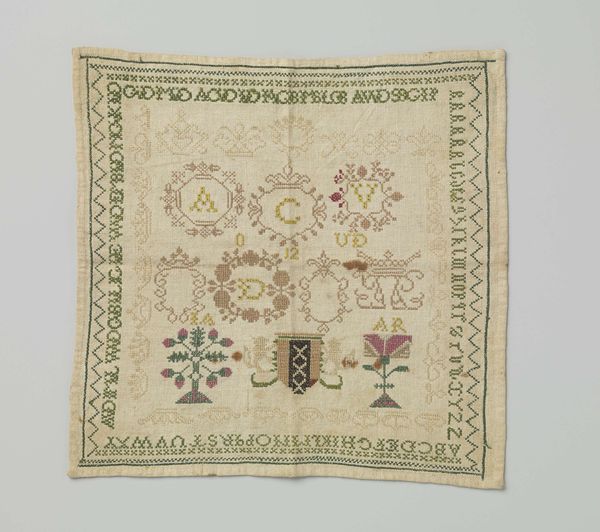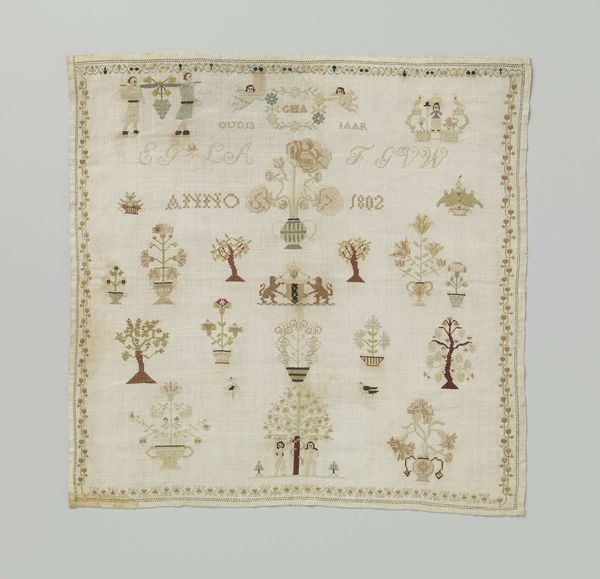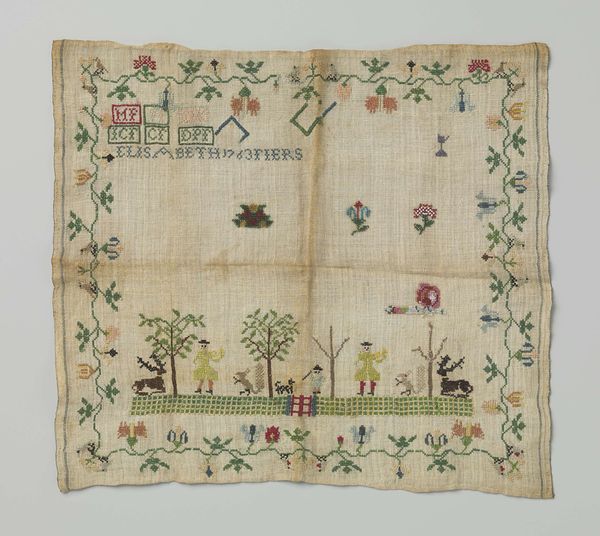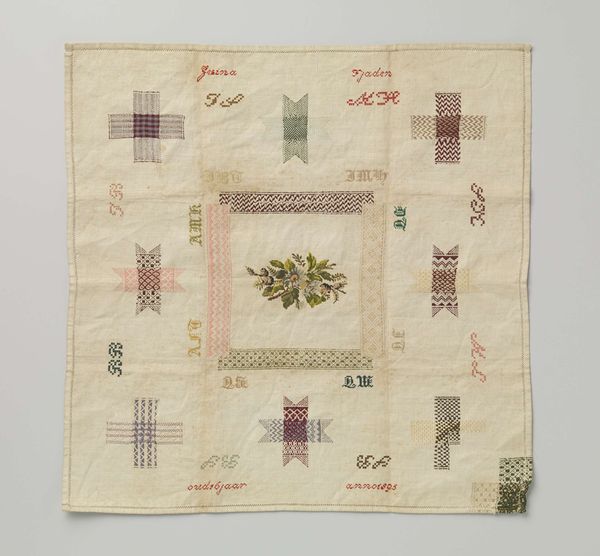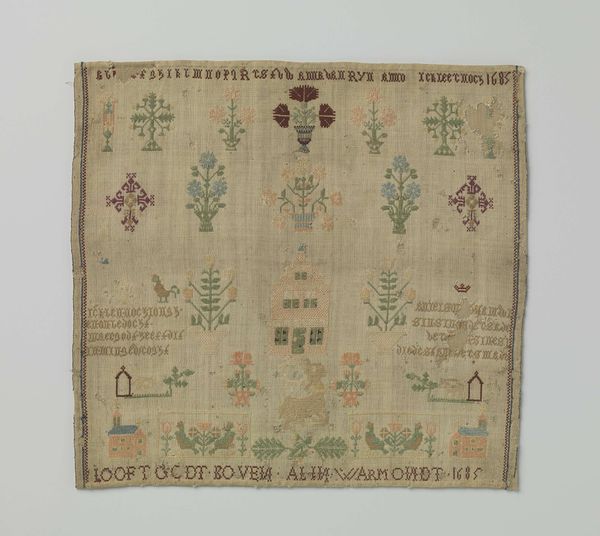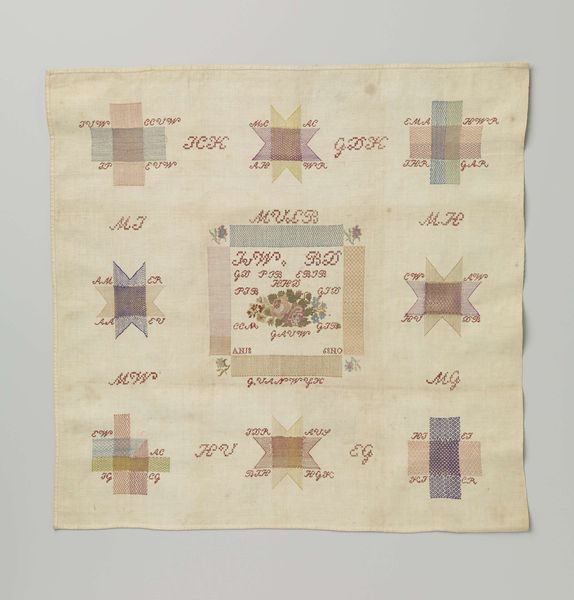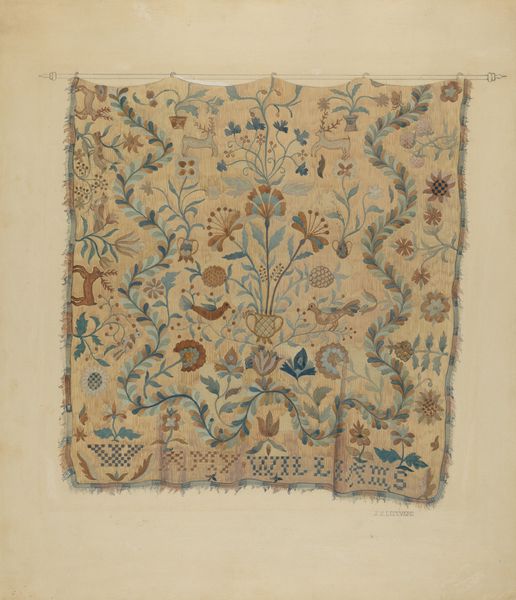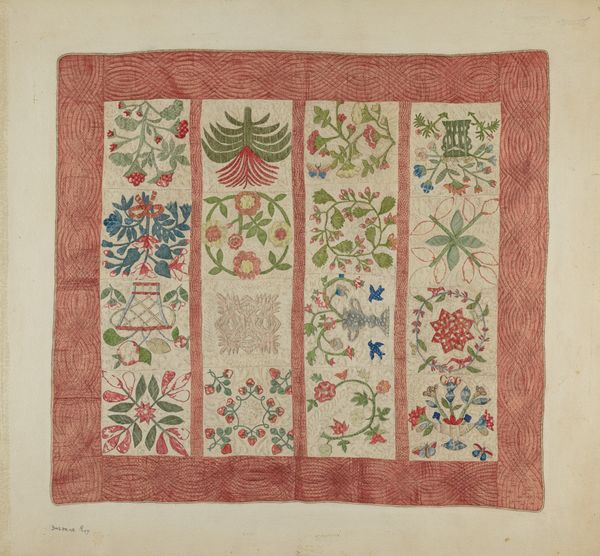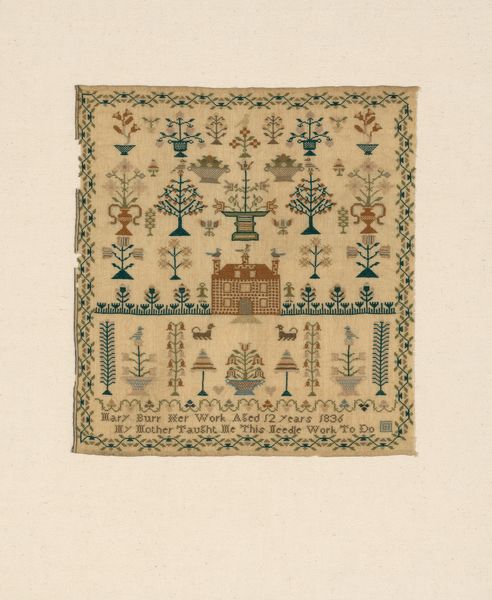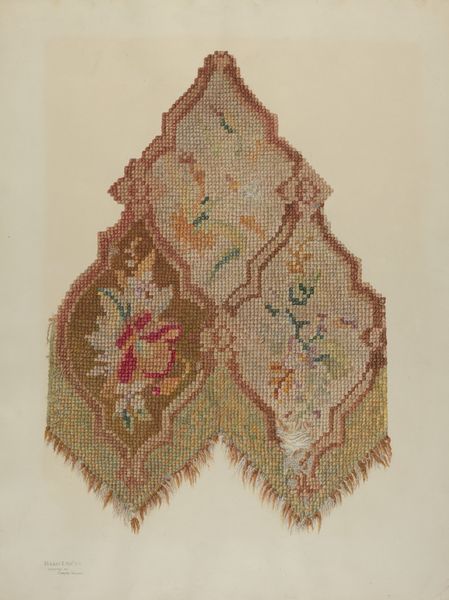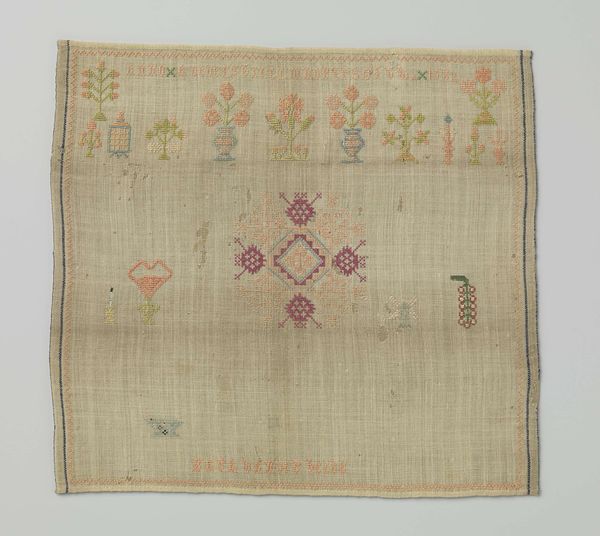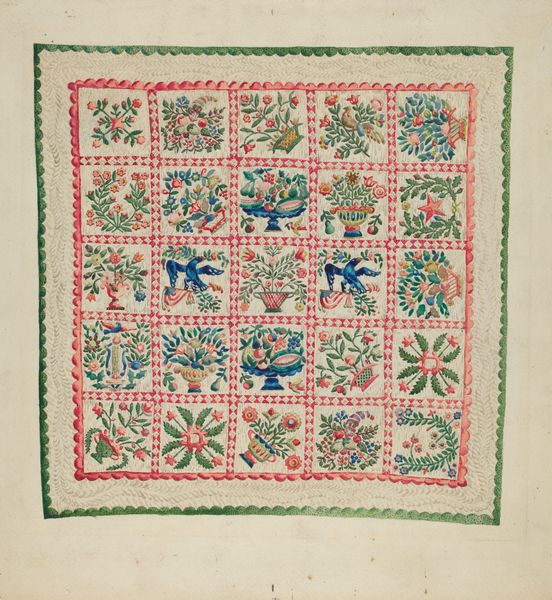
Merklap van linnen waarop in kruis- en stersteek met veelkleurige zijde een merklapgedeelte met ANNO 1801 en drie paar initialen, 13 doorstoppen in satijn- en keperbindingen waarbij één met initialen. 1801
0:00
0:00
textile
#
textile
#
folk-art
#
decorative-art
Dimensions: length 38.0 cm, width 33.0 cm, width 0.7 cm
Copyright: Rijks Museum: Open Domain
Curator: I’m immediately drawn in by the overall softness of this textile and the subtle color palette. There’s an intimate quality to it. Editor: Indeed. What we're looking at is a sampler, or "Merklap" in Dutch, crafted from linen in 1801. It showcases a variety of stitches in multi-colored silk threads. Notice the cross-stitch and star stitch work forming a composition brimming with symbols. Curator: The symbols do stand out! I see a crown, what looks like blossoming fruit trees, a pair of rabbits… Each carries its own potential meaning. And that it's titled, at the very top, as ‘Anno,’ in a calligraphic-type embroidery; an indicator of what and when it is. Editor: Absolutely. Think of these samplers as historical documents that can illuminate the intersectional position of girls and women in that period. They were used both to teach needlework skills and to embed moral, social, and even familial values, and the act of their very stitching should be understood as a symbol of status and cultural identity. Curator: It’s fascinating how skill and status were so intertwined. I imagine the repetition involved in each stitch acted as both meditation and inculcation into acceptable codes of femininity. Editor: Precisely! These patterns and motifs, handed down through generations, reinforced cultural memory. Note how certain visual elements recur, each a vessel carrying emotional and psychological weight from one generation to the next. The potted plants perhaps symbolize growth and domesticity, while animals were incorporated into these samplers to signal renewal. Curator: Seeing it within a larger context makes me rethink its delicate appearance. What appears sweet on the surface served as an intersectional site for labor, tradition, and gender performance. Editor: Exactly. By looking deeper at its interwoven construction of artistry and skill, the object reveals more than it conceals, creating its own compelling language that surpasses conventional representation. Curator: Now I see this simple embroidered textile as an artifact with potent meaning that invites continuous conversation, echoing across centuries of identity formation. Editor: Agreed; and looking through the lenses of symbolism we've gained new understandings of visual traditions across the ages.
Comments
No comments
Be the first to comment and join the conversation on the ultimate creative platform.
